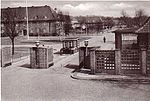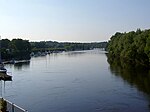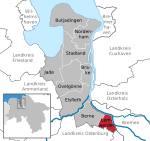Constructor University
1999 establishments in GermanyEducation in Bremen (city)Educational institutions established in 1999Jacobs University BremenUniversities and colleges in Bremen (state)
Constructor University, formerly Jacobs University Bremen, is an international, private, residential research university located in Vegesack, Bremen, Germany. It offers study programs in engineering, humanities, natural and social sciences, in which students can acquire bachelor's, master's or doctorate degrees. Most of the instruction at the university is in English. Constructor University's students come from more than 110 countries, with about 80% foreign students and approximately 33% international faculty members.
Excerpt from the Wikipedia article Constructor University (License: CC BY-SA 3.0, Authors).Constructor University
Campus Ring, Bremen Vegesack (Bremen-Nord)
Geographical coordinates (GPS) Address Website External links Nearby Places Show on map
Geographical coordinates (GPS)
| Latitude | Longitude |
|---|---|
| N 53.166666666667 ° | E 8.65 ° |
Address
Constructor University
Campus Ring 1
28759 Bremen, Vegesack (Bremen-Nord)
Free Hanseatic City of Bremen, Germany
Open on Google Maps











